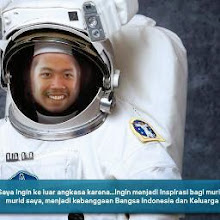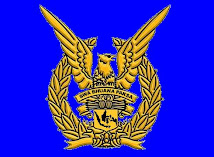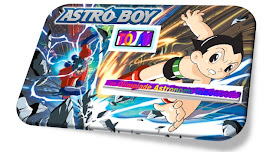Pengalaman Belajar Fisika di SMAN BI 1 Banjar
Ada Apa Dengan Fisika? PAPER AIRPLANE ACTIVITY
Pengalaman Belajar Fisika di SMAN BI 1 Banjar
Ada Apa Dengan Fisika?
Overview
In the paper airplane activity students select and build one of five different paper airplane designs and test them for distance and for time aloft. Part of this activity is designed to explore NASA developed software, FoilSim, with respect to the lift of an airfoil and the surface area of a wing.
Materials
- calculator
- ruler
- graph paper
- lightweight unlined paper
- scissors
- Download Design for the Dart
- Download FoilSim or execute on-line.
Technology Needed
- Internet Access
- Graphing Calculator (optional)
Time Required
- 2-3 class periods
Classroom Organization
- Students should work in groups of 3 or 4.
Procedure
- Give students a sheet of unlined paper and instructions for construction of a paper airplane (See download above).
- Students should give their plane a name using the aviation alphabet. (Example N 831 FE represents November 831 Foxtrot Echo. Identification numbers and letters must not exceed 7; and the identification must begin with N, which stands for the United States.)
- Students should determine the area of the wings of their planes. If students are able, have them unfold their planes and lay out basic geometric shapes to fill the wing area. Then have them calculate the total area from the sum of the areas of the shapes. (See example. Use "back arrow" to return here.)
If students are not able to calculate geometric areas, they could make a duplicate plane, cut off the wings, and lay the wings onto measured grids or pieces of graph paper and count the total squares covered, estimating partial squares.
A variation of this technique that eliminates a duplicate plane and cutting wings is to draw or trace a grid on a blank transparency with a sharpie marker and then hold the clear grid over the wings to count squares covered.
- Have students fly their planes in the gym or hallway or other large indoors area (to eliminate wind effects) five times, each time trying for maximum distance. Stress trying to duplicate the same launch angle and speed. Now do another five trials, this time trying for maximum time aloft. Students should record their distances and times and average the three longest distances and the three longest times.
- Have students put their data onto a graph for the class, one graph of time aloft vs. wing area and the other of distance vs. wing area.
- Discuss the results from the graphs as a class, and then ask for predictions as to what would happen if the wings were made smaller.
- Have the students draw a line two centimeters from and parallel to the trailing edges of their wings, and then cut that 2 cm portion off the wings (Shown in red).
The cut off part should be tucked on the inside of the plane when it is refolded in order to keep mass constant. You might ask the class to provide an explanation for doing this.
- Repeat steps three through six.
- Have the students investigate their results using FoilSim. They should set the ANGLE OF ATTACK to 5 degrees and then vary only the area of the wing and note the effect on the value of LIFT. They can compare these results to their own experimental results.
- ADDITIONAL QUESTION: "Why don't all planes have the biggest wing area possible? Why do some fighter jets have small wings?" (ANSWER: There are other factors that contribute to lift, such as velocity and shape of the wing. The weight of a plane is also very important.) Students can investigate these other factors by going through the lessons that are part of FoilSim.
Extension Activity
- Further activities that your class might try.
Assessment Strategies/Evaluation
- Each group could make a presentation on their airplane and what made its design successful.
- Students could individually graph the experimental data and make a report.
- Challenge students to fold a better plane and explain the reasons for changes in design.
- Students could write a summary of experimental results and relate the variables tested.
Supplementary Resources
Sumber:
NASA
























No comments:
Post a Comment